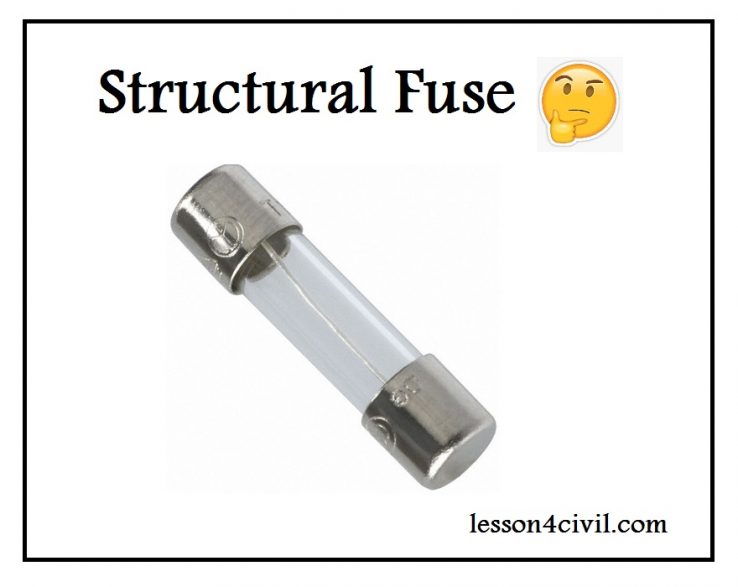Structural fuse , concepts and design
structural fuse is a concept to protect important parts of the structure by sacrificing less important members. Fuse is a member that is designed weakly on purpose to absorb the excessive loads by its failure. In this article I want to introduce different types of structural fuse.
What is the role of structural fuse?
The main role of these members is to dissipate excessive energy by their plastic deformations, in other words we design them to reach their plastic deformations under a certain amount of loading. These members must be easy to replace after the earthquake. So they are usually designed as exposed members. This is a practical approach in structural optimization.
How to design it?
In this method, first we find out which members are more likely to deform more than other in a seismic loading. Then, we design them for a load that is far smaller than the earthquake load. As a result we can make sure if that earthquake happens, these members (fuses) will definitely become plastic. So their plastic deformation will absorb a large proportion of earthquake energy. It is noteworthy that the other members must stay elastic while the fuses get plastic. Another important thing is that the fuse must not be excessively weak to cause collapse of instability of the structure.
To satisfy these considerations, codes and standards such as AISC suggest to design the fuses for a reduced load. On the other hand, usual members must be designed for an increase seismic load.
Common types of structural fuse
- Buckling resistance braces: many damage in convergence braces are because of a difference between tensile and compressive capacity of the braces. So these braces have a natural potential to deform plastically. In other words it is good idea to sacrifice them as structural fuses. Buckling resistant braces are a special category of converged bracing. They are consist of a slender steel member embedded in a coating of concrete that prevents buckling. Since they are protected against buckling, they can absorb higher amounts of seismic energy compared to usual CBF bracing. Steel core of these kinds of bracing is expected to deform permanently in case of large earthquake forces. in other words it absorbs lots of energy and is likely to protect the rest of the frame by sacrificing itself.
- Adding Damping And Stiffness (ADAS/TADAS): as it is shown in the figure below, these are 2 sets of deformable steel plated that connects two points of buildings. In case of any relative movement, they are going to deform nonlinearly and absorb masses of energy. As it is illustrated, these elements are usually installed between braces and girder.
- Shear panel dampers: these mechanical damper are an effective way that localize the scope of damage. They are also easy to replace and reasonably priced.

A weakened section functions as a fuse



Comments